Experience the Allure of Four Gates Pagoda: A Must-Visit Landmark
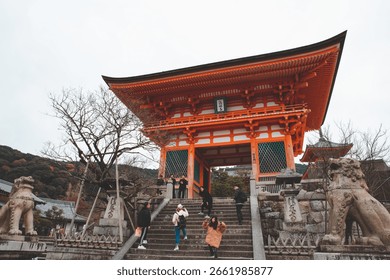
An Essential Guide to Visiting Four Gates Pagoda
In This Guide
- An Essential Guide to Visiting Four Gates Pagoda
- The Rich History and Legends of Four Gates Pagoda
- Main Highlights: What You Absolutely Can’t Miss
- Planning Your Visit: A Practical Guide
- Tickets: Prices, Booking, and Tips
- How to Get There: A Complete Transportation Guide
- Local Cuisine and Accommodation Nearby
- Frequently Asked Questions
- Final Thoughts on Your Trip
Nestled at the foot of Qinglong Mountain, approximately 33 kilometers southeast of Jinan, the Four Gates Pagoda (四门塔) stands as a magnificent testament to China’s rich history and architectural prowess. Believed to be the oldest existing pavilion-style stone pagoda in the country, this remarkable structure dates back to A.D. 611, during the Sui Dynasty. Its significance is underscored by its designation as a Major Historical and Cultural Site Protected at the National Level since 1961.
As you approach the pagoda, you’ll be drawn in by its striking pyramid-shaped roof, which features 23 tiers of intricately overlapping stone slabs. The symmetrical design showcases four identical square walls, each adorned with a door that hints at the mysteries contained within. Inside, a central pillar supports the roof, surrounded by stunning Buddha sculptures that have captivated visitors for centuries.
Whether you are a history buff, an architecture enthusiast, or someone seeking a peaceful retreat amidst nature, the Four Gates Pagoda offers a unique glimpse into the spiritual and cultural fabric of China. With its serene surroundings and rich heritage, this ancient pagoda is a must-visit destination for anyone interested in exploring the depth of Chinese civilization.
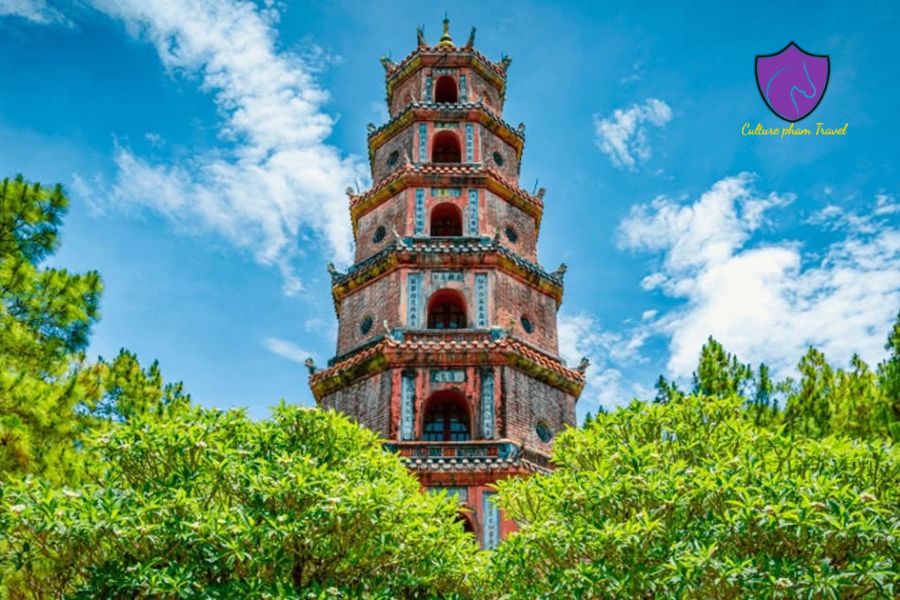
Four Gates Pagoda.
Prepare to embark on a journey through time as we guide you through everything you need to know for a fulfilling visit to this enchanting landmark.
The Rich History and Legends of Four Gates Pagoda
Nestled at the foot of Qinglong Mountain, approximately 33 kilometers southeast of Jinan, lies the Four Gates Pagoda (四门塔), a remarkable structure that stands as a testament to China’s rich historical tapestry. Constructed in 611 AD during the Sui Dynasty, this pagoda is recognized as the oldest existing pavilion-style stone pagoda in the country. Its architectural elegance and historical significance have earned it the designation of a Major Historical and Cultural Site Protected at the National Level since 1961.
Architectural Marvel
The Four Gates Pagoda is an exceptional representation of one-storey, pavilion-style pagodas. Built from locally quarried hard stone and bricks, it features a symmetrical design with four identical square walls facing each of the cardinal directions. Each wall is adorned with a door, contributing to the pagoda’s name. The roof is a stunning pyramid shape, comprising 23 tiers of overlapping stone slabs, culminating in a stone steeple that is intricately carved with Buddhist scriptures.

Four Gates Pagoda.
Inside, visitors are greeted by a strong square stone pillar at the center, around which a corridor winds. Seated Buddha statues, each facing one of the four doors, enhance the spiritual ambiance of the pagoda. These sculptures are believed to be older than the pagoda itself, dating back to the Eastern Wei dynasty, indicating that the pagoda was possibly built to house these significant relics.
Historical Significance
The pagoda’s history is intertwined with that of the Shentong Temple, a once-thriving religious site now in ruins nearby. The temple and pagoda were central to the spiritual life of northern China during the Sui Dynasty, and the pagoda’s construction reflects the artistic and architectural innovations of the time. The discovery of an inscription in the pagoda’s ceiling in 1972 confirmed its construction date and has provided valuable insights into the era’s craftsmanship.
Legends and Cultural Context
While the Four Gates Pagoda is primarily regarded for its architectural beauty and historical value, it is also steeped in local legends. One such tale speaks of the ancient “Nine-tip Pine,” a tree adjacent to the pagoda believed to be over a thousand years old. Folklore suggests that this tree has witnessed the passage of time and the myriad events that have unfolded around the pagoda, serving as a guardian of its sacred space.

Four Gates Pagoda.
The pagoda’s design and purpose reflect the deep-rooted Buddhist traditions of the time, as it was not merely a structure but a symbol of spirituality and enlightenment. The seated Buddhas within its walls—representing various aspects of enlightenment—invite visitors to contemplate their meanings and the rich narratives woven into their existence.
Visiting Today
For the modern traveler, the Four Gates Pagoda offers a glimpse into a bygone era and a chance to connect with the spiritual and historical essence of China. A visit to this iconic site is not complete without a wander through its surroundings, where the remnants of the Shentong Temple and the ancient pine create a serene atmosphere, perfect for reflection.
As you stand before this ancient marvel, take a moment to appreciate the stories of resilience and devotion that echo through its stone walls, each crack and corner whispering the legends of the past. The Four Gates Pagoda is not just a structure; it is a living testament to the enduring spirit of Chinese culture and history, inviting travelers from around the world to experience its timeless beauty.

Four Gates Pagoda.
Main Highlights: What You Absolutely Can’t Miss
Discover the Four Gates Pagoda: A Timeless Marvel
Nestled at the foot of Qinglong Mountain, about 33 kilometers southeast of Jinan city, the Four Gates Pagoda (四门塔) stands as a testament to ancient Chinese architecture and spiritual heritage. As the oldest existing pavilion-style stone pagoda in China, its historical significance is matched only by its unique architectural features. Here’s what you absolutely cannot miss during your visit to this remarkable site.
1. Architectural Splendor
- Pavilion-Style Design: The Four Gates Pagoda exemplifies the one-storey, pavilion-style pagodas that emerged during the Sui Dynasty (581–618 AD). Its symmetrical design features four identical walls, each adorned with a door, and a striking pyramid-shaped roof consisting of 23 overlapping stone slabs that taper to a delicate stone steeple at the top.
- Intricate Details: Look closely at the stonework; the pagoda is built from local hard stones, and the intricate carvings on the steeple highlight the craftsmanship of the era. The architecture offers insight into the evolution of pagoda design, making it a vital study for enthusiasts of Chinese history.
2. Cultural Significance
- Historical Context: Erected in 611 AD, this pagoda is not only a cultural landmark but also a protected National Historical and Cultural Site since 1961. It reflects the religious practices of the time, serving as a housing site for four seated Buddha statues, each representing different aspects of Buddhist belief.
- Buddha Statues: Inside, you’ll find four intricately carved Buddha statues, each facing one of the cardinal directions. These sculptures date back to an earlier era, showcasing the continuity of spiritual tradition in the region.
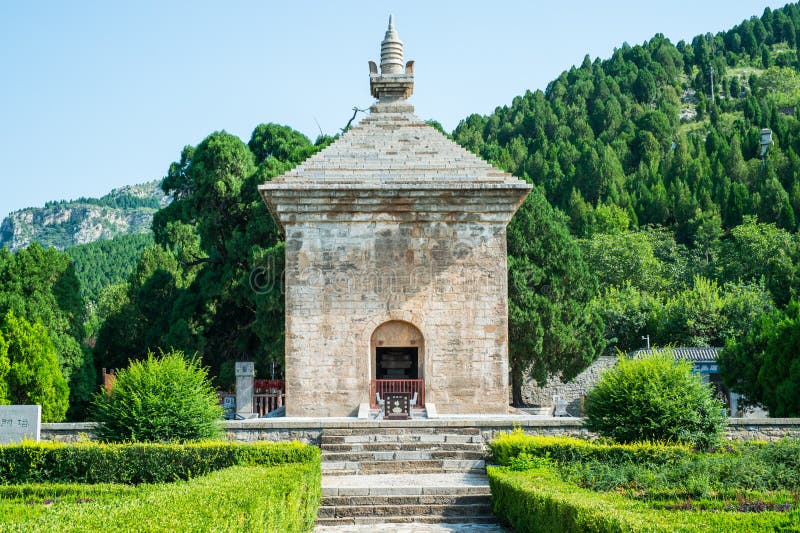
Four Gates Pagoda.
3. The Enigmatic Nine-tip Pine
- Natural Beauty: Standing next to the pagoda is the ancient Nine-tip Pine, a tree believed to be over a thousand years old. This remarkable tree not only enhances the scenic beauty of the site but also adds a layer of mystique, as it’s thought to be a witness to centuries of history unfolding around it.
4. Surrounding Attractions
- Nearby Pagodas: Don’t miss the chance to explore the nearby Dragon-and-Tiger Pagoda and the Minor Dragon-and-Tiger Pagoda, both dating from the Tang Dynasty. These structures provide additional context to the evolution of Buddhist architecture in the region.
- Shentong Temple Ruins: Just east of the Four Gates Pagoda lie the ruins of the Shentong Temple, once a significant spiritual center in northern China. While it may be in ruins today, the site offers a glimpse into the grandeur of its past.
5. Visitor Information
- Getting There: Accessible by bus (812, 67, 815), the pagoda is a short journey from Jinan. The serene landscape surrounding the pagoda makes the trip worthwhile.
- Opening Hours & Tickets: Open from 7:30 AM to 5:30 PM, tickets are priced at ¥25, making it an affordable destination for history enthusiasts and casual travelers alike.
- Best Time to Visit: The ideal months to experience the pagoda are from July to October when the weather is favorable for exploring the picturesque surroundings.

Four Gates Pagoda.
6. Preservation and Heritage
- Conservation Efforts: As a protected site, the Four Gates Pagoda is a focal point for heritage conservation in China. Its preservation not only serves as a reminder of the past but also as an educational resource for future generations.
Conclusion
A visit to the Four Gates Pagoda is not merely an exploration of an ancient structure; it is an immersive journey into China’s rich history and cultural heritage. From its captivating architecture to the serene natural surroundings, the pagoda invites you to reflect on the profound spiritual traditions that have flourished for centuries. Don’t miss the chance to experience this timeless marvel on your travels through China.
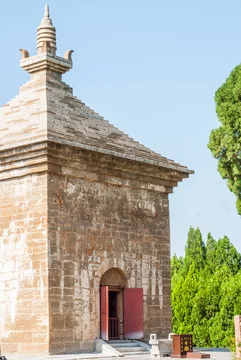
Four Gates Pagoda.
Planning Your Visit: A Practical Guide
Essential Information for Your Visit to Four Gates Pagoda
Nestled at the foot of Qinglong Mountain, approximately 33 kilometers (20 miles) southeast of Jinan city, the Four Gates Pagoda (四门塔) stands as a testament to China’s rich architectural and cultural history. As the oldest surviving pavilion-style stone pagoda in the country, it’s an essential stop for anyone interested in Chinese history or Buddhist architecture.
Getting There
Location:
Four Gates Pagoda
NO.55, Sujia Village, Liubu Town, Licheng District, Jinan, Shandong Province.
Transportation Options:
– Bus: Take Bus 812, 67, or 815 from Jinan city to reach the pagoda easily.
– Private Vehicle: If you prefer driving, the journey takes about 40 minutes from the city center. Ensure to have a map app ready as signage may be limited.
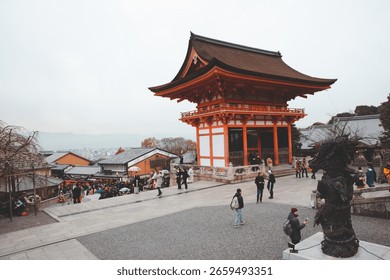
Four Gates Pagoda.
Ticket Information
- Admission Fee: ¥25
- Opening Hours: 07:30 AM – 05:30 PM
- Best Time to Visit: July to October offers the most pleasant weather, making for an enjoyable exploration around the pagoda and its scenic surroundings.
Architectural Marvel
The Four Gates Pagoda is a masterpiece of early 7th-century architecture, built during the Sui Dynasty (581-618 AD). Here’s what to look for:
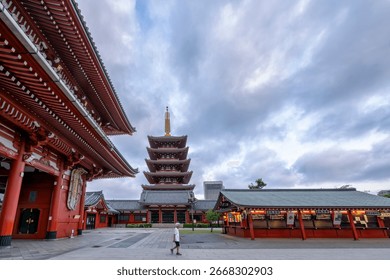
Four Gates Pagoda.
- Design: The pagoda features a square cross-section with four identical sides, each adorned with a door that has a rounded arch. The pyramid-shaped roof consists of 23 tiers of overlapping stone slabs, culminating in a stone steeple.
- Statues Inside: Within the pagoda, you’ll find a strong square stone pillar that holds four seated Buddhas, each facing a cardinal direction. These statues add a spiritual dimension to your visit.
- Surroundings: Don’t miss the ancient “Nine-tip Pine” nearby, believed to be over a thousand years old, and two other pagodas from the Tang dynasty that stand in close proximity.
Cultural Context
Recognized as a Major Historical and Cultural Site Protected at the National Level since 1961, the Four Gates Pagoda is not just an architectural wonder but also a vital part of China’s Buddhist heritage. The pagoda’s historical significance is enhanced by the inscription discovered in 1972, confirming its construction date in A.D. 611.

Four Gates Pagoda.
Nearby Attractions
While in the area, consider exploring other attractions to enrich your journey:
- Shentong Temple: Once a significant religious site, now in ruins but worth a visit for its historical context.
- Baiyun Lake: A picturesque spot for relaxation and scenic views.
- Daming Lake Park: Perfect for a leisurely stroll or a boat ride.
Travel Tips
- Dress Comfortably: Wear comfortable shoes, as the terrain around the pagoda may include uneven paths.
- Photography: Early morning or late afternoon light provides excellent conditions for photography.
- Local Cuisine: Don’t miss out on sampling local Shandong cuisine in Jinan after your visit. Look for local specialties like sweet and sour carp or Jinan-style fried dough.

Four Gates Pagoda.
Conclusion
A visit to Four Gates Pagoda is more than just a sightseeing trip; it’s an immersion into the profound historical and spiritual narratives of China. By planning your visit with these practical tips, you can ensure an enriching experience that connects you deeply to the cultural essence of this ancient site.
Tickets: Prices, Booking, and Tips
Visiting the Four Gates Pagoda (四门塔) is a journey into the heart of ancient Chinese architecture and Buddhist culture. Located just southeast of Jinan, this historical gem offers a glimpse into the Sui Dynasty, making it a must-see for international travelers eager to explore China’s rich heritage. Here’s everything you need to know about tickets, booking, and insider tips for your visit.
Ticket Information
- Price:
-
The entrance fee to the Four Gates Pagoda is ¥25 (approximately $3.50 USD).
-
Opening Hours:
- The pagoda is open daily from 07:30 AM to 05:30 PM. It’s advisable to arrive early to avoid crowds and enjoy a serene experience.
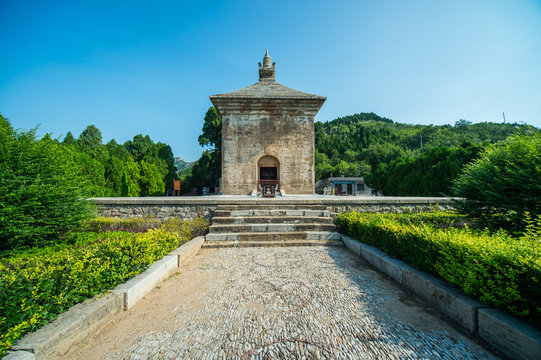
Four Gates Pagoda.
Booking Tips
- Advance Tickets:
-
While tickets can typically be purchased on-site, it’s wise to check online platforms or local travel agencies for any promotions or group ticket options, especially during peak tourist seasons (July to October).
-
Guided Tours:
-
Consider joining a guided tour that includes the Four Gates Pagoda and other nearby attractions. This can provide you with richer context and insights into the pagoda’s history and architecture.
-
Transportation:
- To reach the pagoda, you can take local buses 812, 67, or 815 from Jinan. Make sure to check the bus schedules in advance to ensure a smooth journey.
Insider Tips
- Best Time to Visit:
-
To fully appreciate the beauty of the pagoda and its surroundings, plan your visit during the recommended season of July to October when the weather is most pleasant.
-
Photography:
-
The pagoda’s unique architecture and the ancient pine tree nearby provide excellent photo opportunities. Early morning or late afternoon light can enhance your photographs.
-
Respect the Site:
-
As a site of cultural and historical significance, be sure to observe local customs. Maintain a respectful demeanor and avoid loud conversations, especially inside the pagoda.
-
Explore the Surroundings:
- Don’t miss the ancient “Nine-tip Pine” tree nearby, believed to be over a thousand years old. Additionally, the area houses other Tang dynasty pagodas worth exploring.
Conclusion
A visit to the Four Gates Pagoda is not merely an exploration of a historical site; it’s an immersion into the architectural splendor and spiritual depth of ancient China. With its modest ticket price and rich cultural significance, this iconic pagoda promises to be a highlight of your travels in Shandong Province. Prepare for a journey through time and take the opportunity to engage with one of China’s oldest treasures.
How to Get There: A Complete Transportation Guide
Getting to Four Gates Pagoda: Your Essential Transportation Guide
Visiting the Four Gates Pagoda (四门塔), one of China’s oldest and most significant pagodas, is an enriching experience that combines history, culture, and stunning architecture. Located about 33 kilometers (20 miles) southeast of Jinan, the capital of Shandong Province, reaching this historical gem is quite straightforward. Here’s how to navigate your journey to this remarkable site.
By Public Transport
Buses
The most convenient way to reach the Four Gates Pagoda is via local bus services from Jinan. Here are the bus lines you can take:
- Bus 812: This route connects Jinan city center to the vicinity of the pagoda. Check the schedule for the most updated timings.
- Bus 67: Another option that provides access to the area.
- Bus 815: This bus also serves the route toward the pagoda.
The journey by bus typically takes about an hour, depending on traffic conditions. Be sure to have some cash on hand, as not all buses accept electronic payments.
By Taxi or Ride-Sharing
If you prefer a more direct route, hiring a taxi or using a ride-sharing app will get you to Four Gates Pagoda comfortably and quickly. The drive from central Jinan usually takes around 40 minutes, making it a great option for those short on time or who wish to avoid the hassle of bus transfers.
Estimated Taxi Fare: Expect to pay approximately ¥100-¥150 for a one-way trip, depending on your starting location and traffic.
Self-Driving
For those who wish to explore the region at their own pace, renting a car is a fantastic option. The roads leading to the pagoda are well-maintained, and having your vehicle allows you the freedom to visit other nearby attractions, such as the Shentong Temple ruins or the scenic Qinglong Mountain.
Directions: From central Jinan, take the G220 expressway southeast toward Licheng District. Follow signs for the pagoda as you approach the vicinity of Liubu Village.
Key Details to Remember
- Address: Four Gates Pagoda, NO.55, Sujia Village, Liubu Town, Licheng District, Jinan, Shandong Province, China.
- Ticket Price: Entry to the pagoda is priced at ¥25.
- Opening Hours: The site is open daily from 07:30 AM to 05:30 PM. It is especially recommended to visit from July to October, when the weather is most pleasant.
Nearby Attractions
While you’re in the area, consider visiting other historical landmarks such as:
- Shentong Temple Ruins: Just a short distance away, these ruins offer a glimpse into the region’s rich Buddhist heritage.
- Qinglong Mountain: An excellent spot for hiking and enjoying nature’s beauty.
With this transportation guide, you’re well-equipped to embark on your journey to the Four Gates Pagoda. Enjoy the breathtaking architecture and immerse yourself in the history of this ancient site!
Local Cuisine and Accommodation Nearby
When visiting the historic Four Gates Pagoda, indulge in the rich tapestry of local cuisine and comfortable accommodations that the surrounding area offers. Nestled in the scenic landscape of Shandong Province, this destination not only provides a glimpse into ancient architecture but also a taste of authentic Chinese culture.
Local Cuisine
Exploring the culinary offerings near Four Gates Pagoda is a delightful journey for the senses. Here are some local dishes and eateries you shouldn’t miss:
- Shandong Cuisine: Renowned for its emphasis on fresh ingredients and bold flavors, Shandong cuisine features dishes like:
- Sweet and Sour Carp: A local specialty that combines the region’s fresh fish with a tangy, sweet sauce.
- Braised Chicken with Mushrooms: A comforting dish highlighting tender chicken and earthy mushrooms, perfect for a hearty meal after a day of exploring.
-
Jinan-style Dumplings: These dumplings are often filled with a mix of meats and vegetables, served in a savory broth or steamed.
-
Recommended Restaurants:
- Lao Zhang’s Restaurant (老张餐厅): Located just a short drive from the pagoda, this eatery is celebrated for its authentic Shandong dishes and warm ambiance.
- Huang He Lou (黄河楼): A riverside restaurant offering stunning views alongside a menu filled with traditional dishes, including various types of dumplings and local fish specialties.
Accommodation
For a restful stay that complements your visit to the Four Gates Pagoda, consider these nearby accommodations that blend comfort with local charm:
-
Qinglongshan Hotel (青龙山酒店): Located conveniently close to the pagoda, this hotel boasts comfortable rooms with modern amenities, stunning mountain views, and a restaurant serving local cuisine.
-
Shandong International Hotel (山东国际酒店): A bit further in Jinan city, this upscale hotel provides luxurious accommodations and excellent service, making it a great choice for travelers seeking comfort and convenience.
-
Homestays in Liubu Village: For an immersive experience, consider staying with local families. These homestays offer a unique opportunity to enjoy home-cooked meals and gain insights into the daily life and culture of the area.
Final Thoughts
Whether you’re savoring traditional dishes or resting in a cozy hotel, the experience surrounding the Four Gates Pagoda is sure to enrich your journey through China’s vibrant history and culture. Embrace the flavors and hospitality of Shandong as part of your exploration of this remarkable site.
Frequently Asked Questions
Frequently Asked Questions
1. Where is the Four Gates Pagoda located?
The Four Gates Pagoda is situated 33 kilometers (20 miles) southeast of Jinan, at the foot of Qinglong Mountain in the Licheng District. It is accessible via public transportation, specifically buses 812, 67, and 815.
2. What is the historical significance of the Four Gates Pagoda?
Constructed in A.D. 611 during the Sui Dynasty, the Four Gates Pagoda is believed to be the oldest existing pavilion-style stone pagoda in China. It has been recognized as a Major Historical and Cultural Site Protected at the National Level since 1961, highlighting its importance in Chinese architectural history.
3. What architectural features can I expect to see at the pagoda?
The pagoda is a stunning example of one-storey, pavilion-style architecture, featuring a square cross-section and symmetrical walls facing each of the four cardinal directions. Its pyramid-shaped roof consists of 23 overlapping tiers, and inside, you’ll find a central pillar surrounded by four seated Buddha sculptures, each representing different Buddhist figures.
4. What are the opening hours and admission fees for the Four Gates Pagoda?
The Four Gates Pagoda is open daily from 07:30 AM to 05:30 PM. The admission fee is ¥25, making it an affordable destination for travelers interested in history and culture.
5. When is the best time to visit the Four Gates Pagoda?
The ideal time to visit is between July and October when the weather is typically pleasant, allowing for a more enjoyable exploration of the surrounding natural beauty and historical sites.
6. Are there any amenities or facilities at the site?
While the pagoda itself is primarily an architectural and historical site, visitors should prepare for basic amenities. It is recommended to bring water and snacks, as there may be limited dining options nearby. Always check ahead for any available facilities.
7. Is there anything else to do near the Four Gates Pagoda?
Yes! The area around the pagoda offers several other attractions, including the Dragon-and-Tiger Pagoda and the ancient “Nine-tip Pine.” You can also explore the remnants of the Shentong Temple, which adds to the historical richness of the region.
8. What should I keep in mind when planning my visit?
When planning your visit, consider the local weather conditions, dress appropriately for outdoor exploration, and be respectful of the cultural significance of the site. Additionally, it’s wise to check for any updates on transportation or site access before your visit to ensure a smooth experience.
Final Thoughts on Your Trip
As you prepare to leave the Four Gates Pagoda, take a moment to reflect on the rich tapestry of history and culture that envelops this remarkable site. The pagoda, believed to be the oldest pavilion-style stone structure in China, stands as a testament to the ingenuity and artistry of the Sui Dynasty. Its elegant design, harmonious proportions, and exquisite craftsmanship encapsulate the spiritual essence of Buddhism, while the serene surroundings invite contemplation and peace.
Key Takeaways:
- Architectural Marvel: The Four Gates Pagoda, with its unique pyramid-shaped roof and symmetrical design, is not just a structure but a narrative of ancient architectural evolution in China.
- Cultural Significance: With its historical roots dating back to A.D. 611, visiting the pagoda offers a glimpse into the past—a time when Buddhism flourished and influenced Chinese culture profoundly.
- Surroundings of Serenity: The ancient pine tree nearby and the remnants of the Shentong Temple enhance the atmosphere, creating a place where nature and history coexist beautifully.
Final Thoughts:
As you walk away from this architectural gem, consider the countless pilgrims and travelers who have passed through these gates, each leaving a piece of their story behind. The Four Gates Pagoda is not merely a destination; it is a portal to understanding the resilience of a culture that has thrived for millennia. Whether you are captivated by its history, inspired by its beauty, or moved by its spiritual significance, this site offers a profound experience that resonates long after your visit. Embrace the stories it holds, and let them enrich your journey through China’s vibrant history and culture.